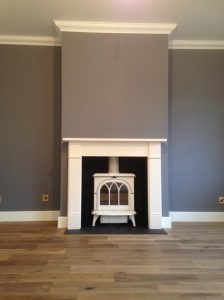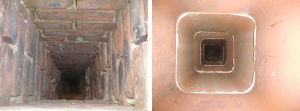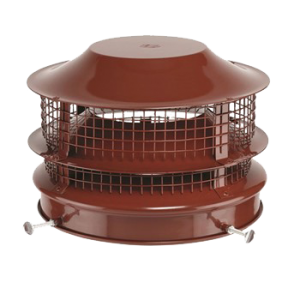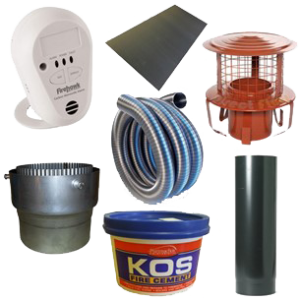When it comes to chimney lining, there is a question we are asked more frequently than ever:
“Should I line my chimney?”
The answer to this will become clear below…
Firstly, it is important to note multiple factors affect the necessity to line your chimney stack. There may be more than one option available to you based on the chimney type you have and the appliance you intend to install. Whether it is a wood burning, multifuel or gas stove, or a simple open fire basket, each installation will require a different approach.

Before committing to the purchase of your new stove it is advisable to organize a home survey to be carried out by a qualified installer/engineer. This can be a registered member of the National Association of Chimney Sweeps (NACS), a Gassafe or HETAS registered engineer.


If the chimney stack is found to contain a clay or pumice lining already in situ, a smoke test should then be carried out to check for any potential leaks. Chimneys that fail this test should have provisions made to install a stainless steel flexible liner. Alternatively, have the leak/s repaired.

It is sometimes possible for customers to carry out a basic inspection of the chimney themselves to establish whether a clay or pumice liner is present, to do this simply look up your chimney through your fireplace chamber opening using a torch and you should see either bare brick (unlined) or a smooth clay which is a clay chimney lining. (Please see images above for reference).
If after carrying out a smoke test your clay chimney liner does pass and is considered sound and suitable for use, then the installation of your new stove should be quite straight forward. Quite typically the only parts involved in the fitting process will be a length of vitreous enamelled flue pipe directly from the stove which is then cemented into the stove collar using a product called fire cement. From the top of the vitreous enamelled flue pipe you can then install either a product called a “clay pot adaptor” or a “sump adaptor”, which are both purpose built for the task and are made from stainless steel.

Once a tight seal has been made connecting either the clay pot adaptor or sump adaptor onto your clay pot chimney liner, you may then wish to install a solid fuel bird guard cowling. There are an abundance of different suitable cowls on the market, although the product we tend to recommend in our showroom and sales line is the stainless steel Wind Jammer cowl. This cowl is designed to not only prevent rain, birds and other vermin from entering the chimney, but it also aids the chimney draw to help prevent smoke passing back into the room through the stove.
The Wind Jammer cowl is available in a powder coated red finish as standard, and can be easily fitted onto a standard chimney pot using the supplied fixings using a screwdriver (no drilling is required).

Smoke tests that fail mean a stainless steel flexible chimney liner must be installed. Always employ the services of a qualified engineer to carry out this work. Qualified installers can provide the relevant certification for your installation.

In our next Blog I will be continuing our discussion on chimney lining with a step by step “How To” installation guide, which I hope will be useful to anyone considering installing a chimney liner and stove themselves. This guide will also offer customers a better understanding of the work that their chosen competent installer is carrying out for those choosing to have a professional complete the stove installation.
Visit the HETAS website to find your local Hetas registered installer. Alternatively, we offer free surveys to those based within Essex. Contact us to find out more.
